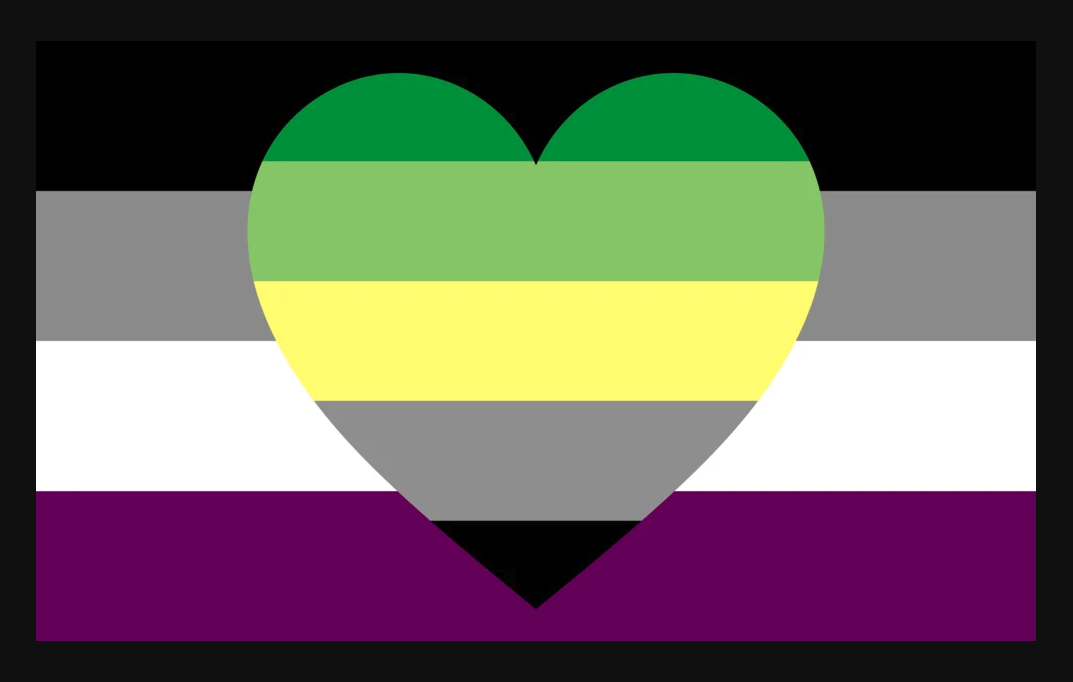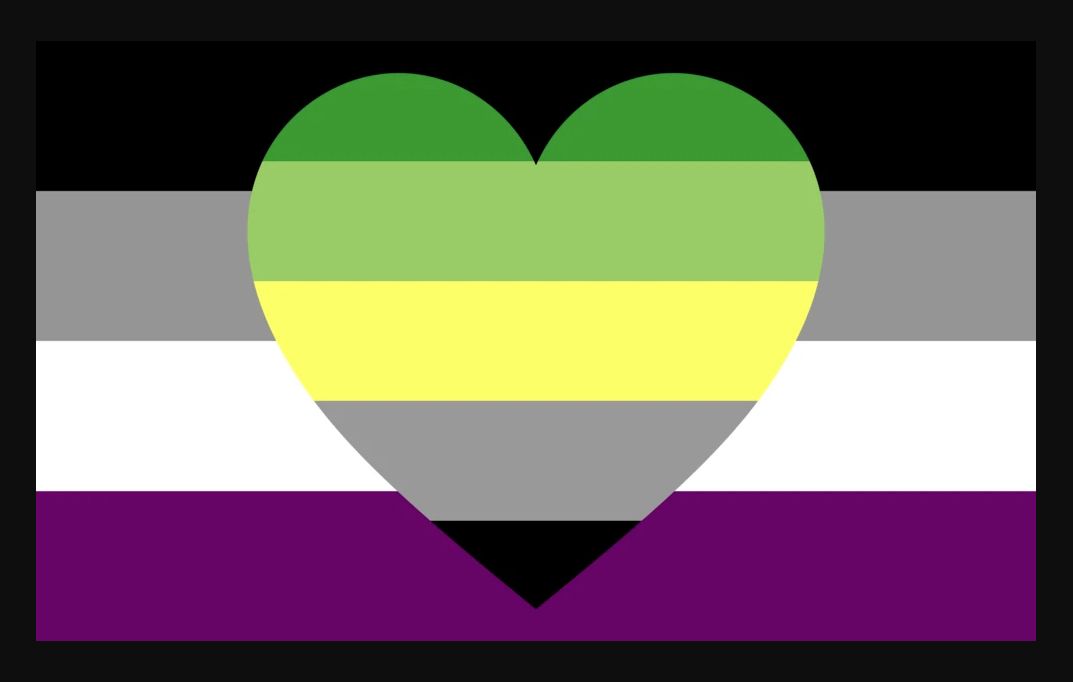“Welcome to the world of asexuals!”
…is what I would say if we really were from other planets. From the outside, asexuality may seem foreign or possibly even alien to others, but there are a lot of misconceptions which can hide the fact that, in many ways, we can be quite similar.
I’ll try to provide an easyish (hopefully broad) overview in this article, but if you’d like to know more or have further questions, please check out the books, articles, and comics mentioned at the bottom.
What is asexuality?
At its core, asexuality (or ‘ace’ for short) is defined by an innate lack of sexual attraction. It is also considered a large umbrella term, covering a range of feelings and experiences that don’t always line up 100% with that definition. Some aces may feel sexual attraction occasionally, but not very often, or need something to happen before feeling sexual attraction to someone, such as forming an emotional bond. We’ll go into those distinctions later.
Basically, people are weird and don’t fit neatly into little boxes.
Attraction
So what exactly is attraction? To answer that, we need to break it down and define a prefix: allo. Allo- is typically combined with other words to mean often experiencing or having regular attraction of some kind. Allosexual (allo) is the opposite of asexual (ace).
There are many different kinds of attraction, but to be brief, I’ll cover some of the more commonly referenced ones.
From an outside view, it appears as though many allosexuals experience attraction as a largely singular combined feeling. If someone is very good looking, an allo may find this person ‘hot’ and perhaps want to ask them out, or cuddle, or think about having sex. Some allos may feel these in varied amounts, or perhaps not in that order, but the key is a general lack of differentiation between those feelings.
Much of this perception is due to allonormativity. Allonormativity is a term referring to the idea that allos are ‘normal’ and that being ace is decidedly not. Allonormativity can make us feel like outsiders while also removing nuance from allosexuals at the same time.
Aces tend to see attraction as a spectrum, like light after being split with a prism. To us, there’s more than one kind of attraction, and for each, we may feel attraction on a scale: anywhere from no attraction at all to the same amount as an allo might.
There are many different kinds of attraction, but to be brief, I’ll cover some of the more commonly referenced ones:
Sexual — Finding someone sexually appealing or physically exciting; wanting to engage in some kind of sexual activity with them
Romantic — Desiring to enter a relationship with someone as more than just friends, with some emotional intimacy or attachment
Aesthetic — Feeling attraction based largely on appearance, body language, and other sensory input
Sensual — Desiring to be non-sexually intimate with someone (such as cuddling, kissing, etc.)
This only begins to cover the range of possible attractions; it’s easy to see that it leaves out things like personality or intelligence. However, even without going into all the details, these four do a decent job of being able to explain much of the variety of attractions people feel. Someone may be a heterosexual gray-ace but panromantic, being happy to pursue romantic adventures with many genders.
Labels
As an easier way to summarize these weird, squishy, and nuanced experiences, many have gathered under the following labels describing the asexual spectrum, also known as ‘a-spec’ identities.
Graysexual / gray-ace — Someone with some sexual attraction but not as much or as often as allosexuals (or in more nuanced ways than allosexuals)
Demisexual — Someone who must have one or more prerequisites met to feel or increase the likelihood of feeling sexual attraction, such as forming an emotional bond
Aromantic — Anyone who doesn’t feel romantic attraction or a regular romantic attraction; opposite of alloromantic.
"We don’t have to prove our asexuality."
This list isn’t exhaustive either, and there’s no way it could be. For some, these labels are still too vague to capture how they feel. Some have even coined new terms, known as microlabels, to suit themselves better. However, labels are only as useful as they’re found to be by the person using them. If someone just considers themselves ‘ace’ and nothing further, that’s perfectly valid. To quote Cody Daigle-Orians from I Am Ace: “Labels are tools you can use to build your asexual identity. They work for you, not the other way around.” [1]

Labels can also change at any time or over someone’s life. They’re not permanently stuck once donned, like a helmet that’s just a bit too small. Everyone is free to pick new labels if they decide ones they were using previously no longer fit. Life is a journey, and we’ll never be done learning new things, even about ourselves.
Misconceptions
Wait, wait, wait… I can hear some thinking, “What about ‘sex?’ It’s in the name, right? But you haven’t talked about it at all yet! Don’t asexuals hate sex?”
Contrary to popular belief, sex doesn’t require sexual attraction. Aces may have sex to connect with a partner, to have kids, because it feels good, or they just want to. There are pro-sex aces, aces who are indifferent, and aces who don’t want sex or are even repulsed by it.
No one stance captures the entire ace umbrella. Even if someone doesn’t care to have sex, that doesn’t mean they think it’s bad or that other people shouldn’t have it.
“Okay, but if some haven’t had it, how do they know they’re asexual?”“Don’t knock it till you try it.”
There are also plenty of other things — like certain foods or activities — allosexuals just know they wouldn’t like, even without trying them. Same with us. We don’t have to prove our asexuality.
“So if aces can have sex and choose not to, doesn’t that make them abstinent or celibate?”
No. Both abstinence and celibacy are almost always an explicit choice to abstain from sex, sexual intimacy, or even marriage in some cases. Aces don’t “choose” their attractions; however, some aces do form partnerships, or get married, or perhaps have kids.
“Have you checked your hormones?”“Isn’t this just low libido?”“Maybe you just need more time, and haven’t found the right person yet.”
Being ace isn’t defined by medical conditions, and it’s not about meeting the ‘right’ people. If someone is okay with how they feel, then there’s nothing wrong or in need of ‘fixing’. We’re fine just the way we are!
If you think you might be ace — or you just want to learn more about it — here is some suggested reading
Head to your local Mid-Columbia Library branch and ask about I Am Ace: Advice on Living Your Best Asexual Life by Cody Daigle-Orians (aka Ace Dad Advice). Ace: What Asexuality Reveals About Desire, Society, and the Meaning of Sex by Angela Chen can also be picked up from any local library, and covers personal experiences and intersectionality.
If comics are more your jam, then look up Aces Wild by Sally Vinter on Tapas, Webtoon, or DeviantArt. The website ohjoysextoy.com (Generally NSFW!) also has a few comics on artists’ experiences being ace, as well as one providing another overview of the split attraction model. Finally, A Quick & Easy Guide to Asexuality by Molly Muldoon and Will Hernandez is a condensed overview in a graphic novel that can also be found at the local libraries. It costs less than $10 if you want to buy it for yourself.
References
This article is, of course, based on my own personal experiences, but is also influenced by the aforementioned books and comics on attraction, as well as past readings of the LGBTQIA+ Wiki at lgbtqia.wiki and other random internet resources I cannot remember.
Here are a few more useful resources:
- Ace & Aro Spectrum Definitions
- What Does It Mean to Be Allosexual?
- Six ways to be an ally to asexual people
- If you really want to deep dive, check out the LGBTQIA+ wiki
Alastair McBain is a software developer, laser cutting experimenter, maker, demoscener, and board gamer. He is the Treasurer of Tri-City Area Gaming, and can be found running the LGBTQIA+ Craft Social and other community events.


